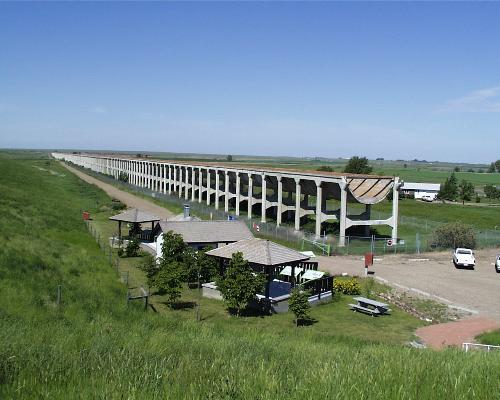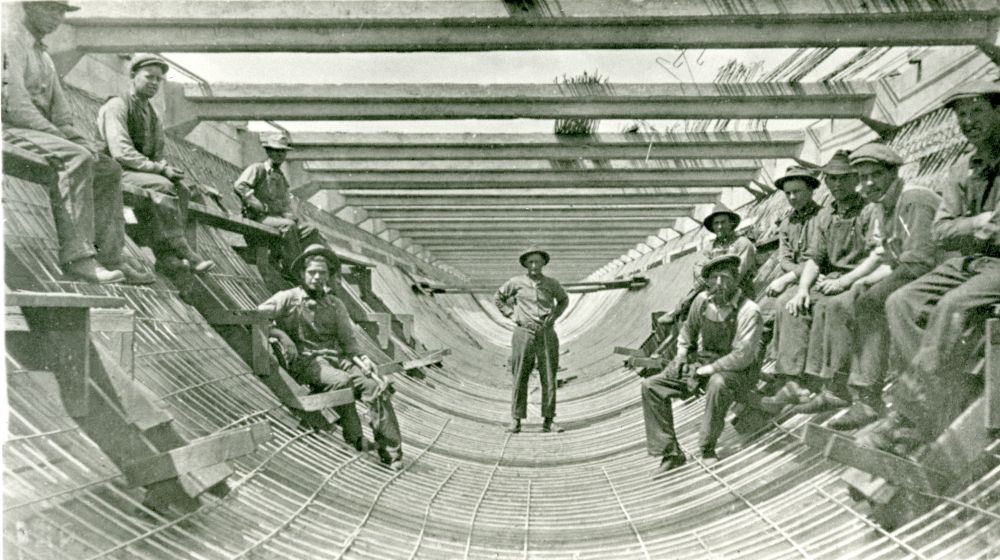
How and Why to Explore the Brooks Aqueduct
By Nerissa McNaughton on May 21, 2025.

The Brooks Aqueduct is a fascinating blend of history, engineering, and natural wonder. Built in the early 20th century, this structure is an important part of how settlers helped shape the Canadian Prairies.
What Is the Brooks Aqueduct?
The Brooks Aqueduct is an elevated concrete irrigation channel that stretches over 3.2 kilometers across the prairie landscape. Built between 1912 and 1914, it was designed to carry water from the Bow River to the arid lands of southeastern Alberta, transforming them into fertile farmland.
At the time of its construction, the aqueduct was hailed as an engineering marvel, being one of the largest concrete structures of its kind in the world. Its design, though ambitious, also highlighted the challenges of innovation during that era. Despite its eventual decommissioning, the aqueduct remains an important historical site and a symbol of the evolving relationship with agriculture, irrigation, and progress.
Why Is the Brooks Aqueduct Significant?
The Brooks Aqueduct was part of a bold vision to make dry grasslands productive for agriculture. Its construction addressed a critical need for irrigation in the region, and it helped to establish Brooks as a major hub for farming. Though the aqueduct fell out of use in 1979 due to advancements in irrigation technology, it became a National Historic Site of Canada in 1983.
Beyond its historical importance, the Brooks Aqueduct is a place where visitors can cand gain a deeper appreciation for how innovation transformed the landscape.

A Journey Through the History of the Brooks Aqueduct
The story of the Brooks Aqueduct began when the Canadian Pacific Railway (CPR) realized the need for large-scale irrigation to support farming communities along its rail lines. The aqueduct was envisioned as part of the larger Eastern Irrigation District, a massive agricultural infrastructure project in the region.
The aqueduct was built using reinforced concrete, a relatively new material at the time, and designed to hold over 900,000 cubic meters of water annually. Its structure was supported by over 100 concrete piers, creating an awe-inspiring sight.
During its active years, the aqueduct funneled water across the semi-arid plains, breathing life into farmland that was once considered uninhabitable. It enabled farmers to cultivate crops like wheat and barley, transforming the region into a productive agricultural zone.
Despite its innovative design, the aqueduct faced significant challenges. Cracks and leaks plagued the structure as the concrete expanded and contracted with temperature changes. Advancements in irrigation canals eventually rendered it obsolete, leading to its replacement by more efficient systems by the late 1970s.

Fun Facts About the Brooks Aqueduct
- World Record Holder: At the time of its completion, it was the largest concrete aqueduct in the world.
- Concrete Power: The aqueduct used more than 43,000 cubic meters of concrete during construction.
- Leopard Frogs: The area around the aqueduct is home to the northern leopard frog, a species of special concern in Alberta.
- Entertainment Venue: Over the years, the aqueduct has served as a dramatic backdrop for events and photo shoots.
- Architectural Influence: Its design directly influenced the construction of other irrigation structures in North America during the same era.
Plan Your Visit to the Brooks Aqueduct
The Brooks Aqueduct site offers a mix of informational exhibits, interpretive signage, and plenty of open space to explore. Visitors can walk along designated paths to admire the aqueduct up close and learn more about its history and operation.
Summer is the perfect season to experience the Brooks Aqueduct in all its glory. The warm weather makes wandering the grounds more enjoyable, while the lush green surroundings enhance the site’s visual appeal.
Plan your summer adventure to the Brooks Aqueduct today and discover a remarkable slice of Canadian history. Learn more about visiting by checking out The Brooks Aqueduct website. Your next great adventure awaits!
Nerissa McNaughton is a freelance writer and a contributor to Alberta Newspaper Group. This story was written for the Alberta Newspaper Groups Summer Escapes Guide advertising feature. Summer Escapes is a special feature about things to do in Alberta this summer. Activities like, staycations, road trips, camping, and other adventures including local attractions, events and food & beverage destinations across Alberta. It is not written by and does not necessarily reflect the views of the editorial staff.
15-14




